Before we introduce this week’s game, Subtraction Bingo, game S24 from the Math Card Games book, I’d like to take a few minutes and discuss WHY we play games.
You know that games are the review and practice for the math facts. Basically, they are a worksheet, albeit, a fun worksheet. But there’s something more important going on here. Games are an application for the facts. Games are the reason that your children want to know their facts. The power of playing with an older sibling or Daddy and winning is powerful! Now the child cares about knowing their facts.
In addition to the game being an application of the facts, this time also develops a positive feeling for math. Our brains attach emotions to events, even if they are unrelated.
Imaging a home filled with the enticing aroma of baking bread. Unexpectedly, a beloved grandparent arrives; oh, the joy and excitement! Following the squeals of happiness and flurries of hugs, the adults and children sit down to bread just out of the oven, buttered, with honey drizzled on each slice….. Forever more, the child will smell baking bread and remember the excitement of that wonderful day.
It’s the same with math games. Did your family get the “sillies” from last week’s game, Race to the Amount? That warm good feeling may be forever be linked with making change. Of course, negative emotions can also attach. Timed tests, flashcards, piles and piles of worksheets generally don’t generate pleasant and happy feelings. This is where the games come in. They provide the review, practice, and application for the math facts.
Well, let’s get to this week’s game. Subtraction Bingo, is… well… a bingo based game! I know. Go figure! Children that like bingo games will love this game; children who aren’t crazy about bingo will still have fun.
This game will cover all the subtraction facts. Use the basic number decks without the 10s. Use the AL Abacus or an addition table if help is needed. These will not become a crutch. Rather, these items become a reference tool that will be visualized and become internalized over time.
Each player takes 20 cards. Lay four face up in a column on the left, then four columns of four making a block of 16 cards. Place the remaining cards face down in the center for all to reach. The goal is to be the first player to cover a row, column, diagonal, or four corners with overturned cards.
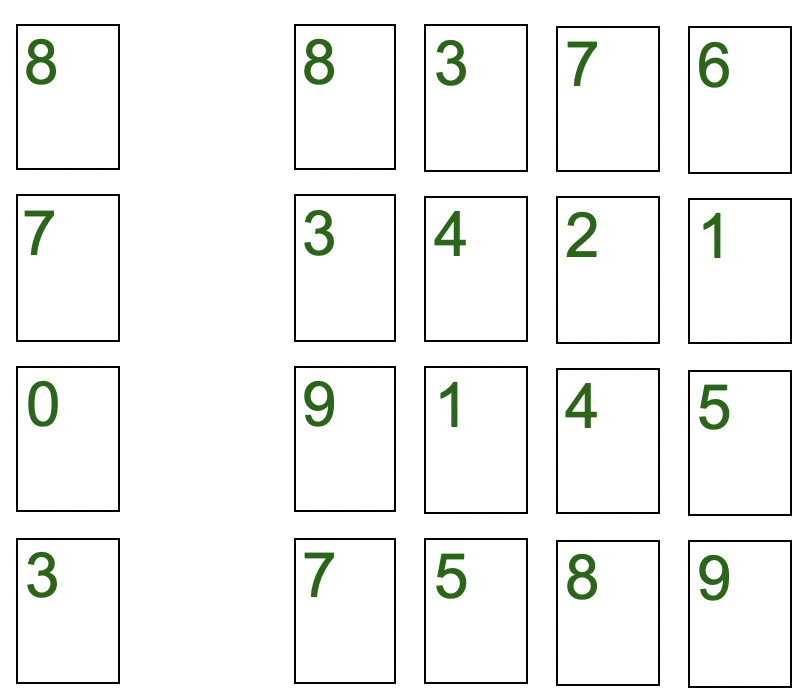
Each player takes a card from the stock, the center pile. Subtract this new number from the column on the left and look for the difference, the answer, in the row to the right. The 1s in the tens place is presumed to be present when needed.
So, we’ve drawn a 4 from the stock. Let’s see what we can find…..
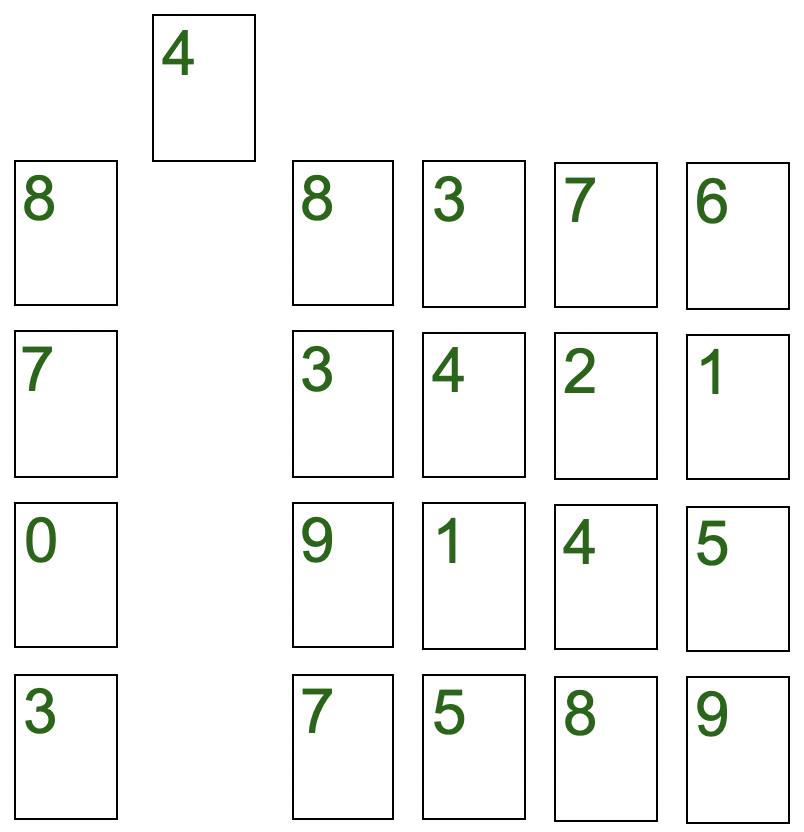
Since we’re looking to subtract 4 from our column on the left, we’ll figure out that 8 – 4 is 4. Do we have a 4 in the top row? No.
Next row: 7 – 4 = 3. Oh look! There’s a 3 in that row. Take the 4 card and place it face down on the 3 covering this space. No changes can be made after a card is played.
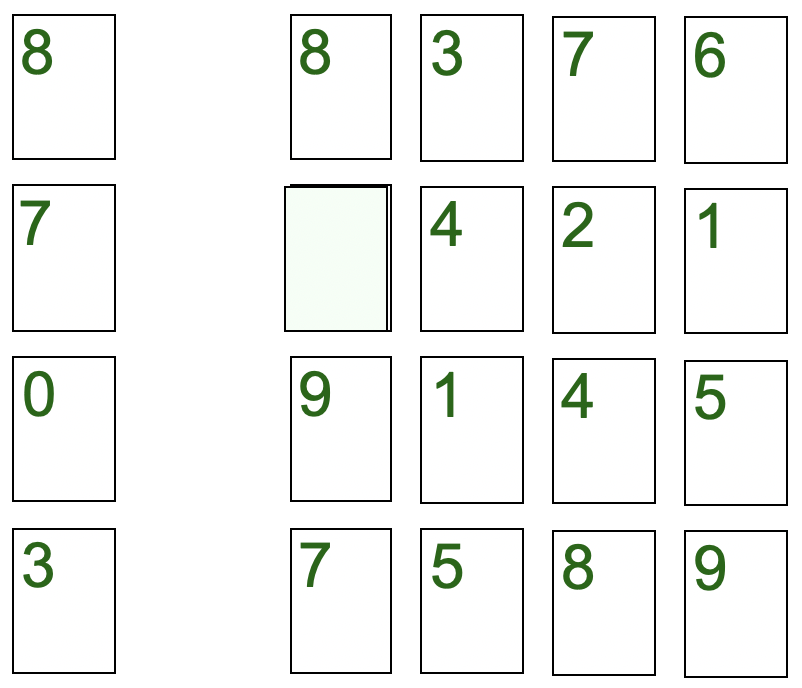
Take another card from the stock. Now we’ve drawn a 9. Remember the 1s in the tens place is presumed to be present when needed. So the 8 becomes 18 and 18 – 9 = 9. There’s no 9 in that first row. Second row: 7 becomes 17 and 17 – 9 = 8. No 8 in that row either.
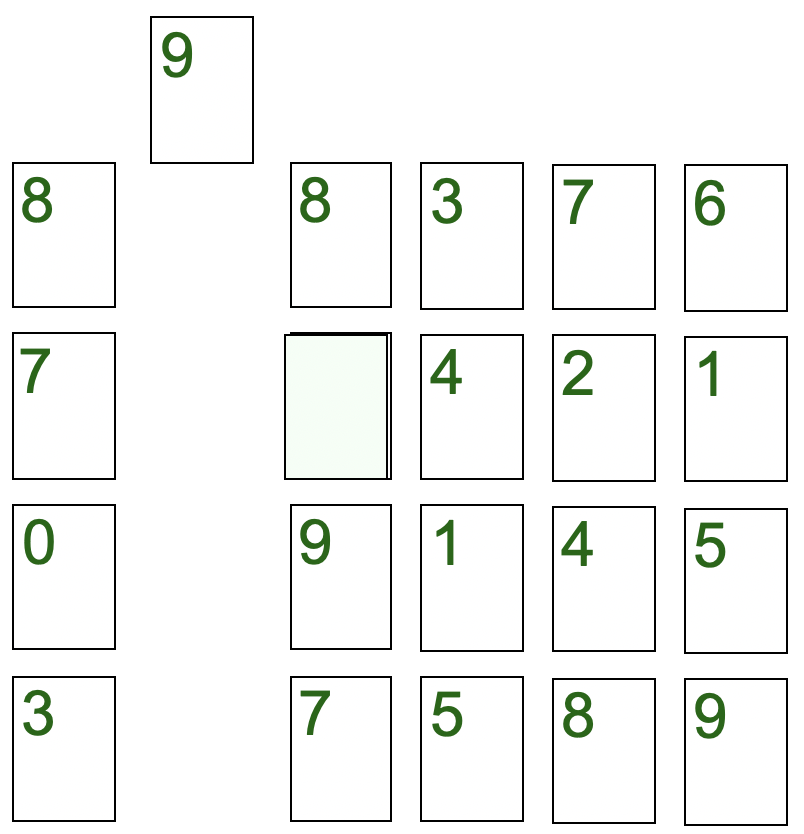
Third row: 10 – 9 = 1. Ooooh. We have a 1! Cover it with the 9 card face down on top of the 1.
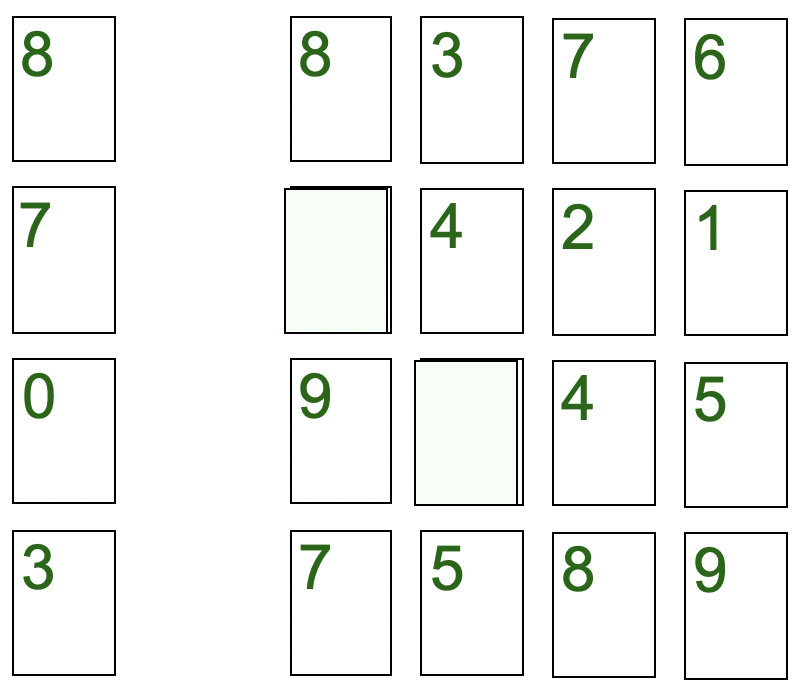
If you pull a card from the stock that has no remainders on your “bingo card”, discard that card. Wait for all the other players to determine if they have matches or discards then everyone takes a card from the stock again. If the stock runs out, use the discard pile and keep playing.
Once the players get the hang of the game, the strategy of their choices will become more evident. Look at where we are now in the game. We have a bunch of cards covered and we’ve just pulled a 1 from the stock. First row: 8 – 1 = 7. Got that in the first row. But wait a minute….. Look at the third row: 0 becomes 10 and 10 – 1 = 9. We have a 9 in that row! We will have all the cards in the row covered and win the game! Yippee!!

Enjoy this week’s game!

It might be confusing to keep track of which player covered up which card.
I think that when we play this game we will use colored paper to cover “our” answer card.
The same paper that we use for one of the multiplication games…I think it’s called “Who’s on Top”.
We cut up scrapbook paper for that one. Each player gets a pretty patterned pink or purple to play with. 🙂
Each player takes 20 cards, making the bingo array and the “calculating” cards to the left. This way, each person has their own “bingo card” and tries to turn over their cards to call bingo.
So, if three people are playing, each will need 20 cards for a total of 60 cards laid out. Plus the cards turned over from the stock.